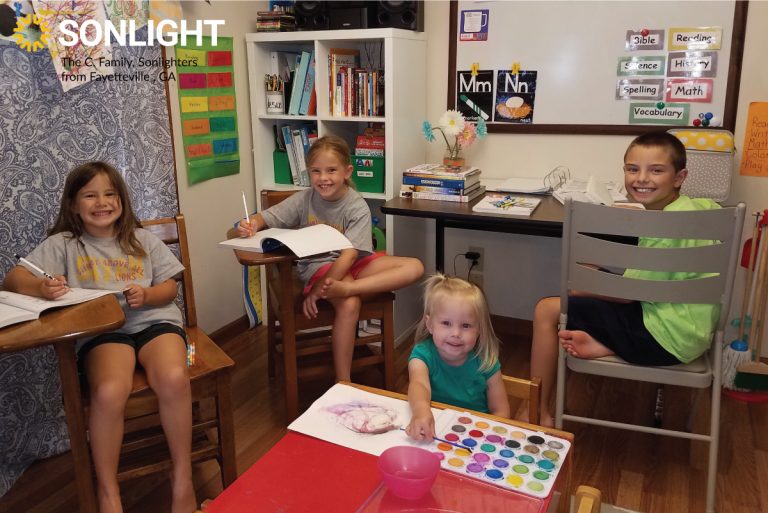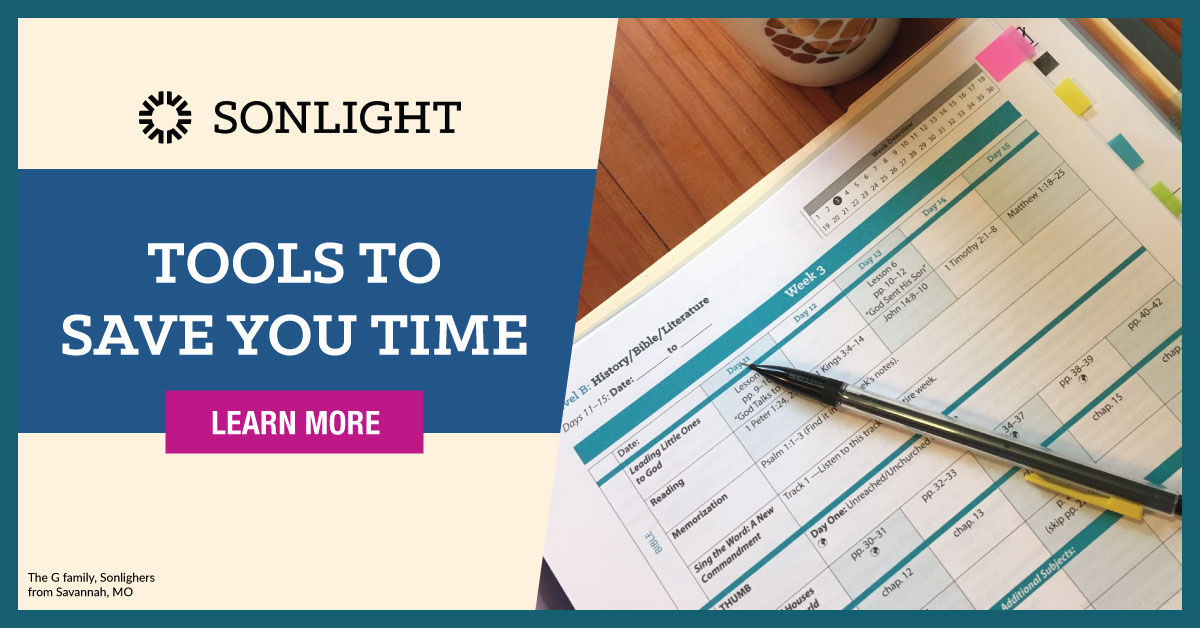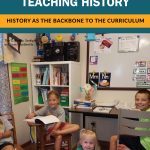Have you ever wondered what you're doing here on the earth? Ever wondered how our country got to the state that it's in? Ever wondered why people in other countries live differently than you do?
Well, I think the answers lie in understanding history. To put it simply ...
Studying history helps children make sense of their world and their lives.
That's why Sonlight centers on history. Our curriculum chronicles the past in order to prepare children to understand and influence their world in the future.
An Internal Timeline of History
As they learn the story of the world (people, places, and events tied together to tell an historical story), children start to understand the wonder, tensions, and troubles in today's world. They build a framework in which to understand new information about their globe. It's like they develop an internal timeline with anchor points on it, such as the rise of the Greeks, the Chinese dynasties, the Industrial Revolution, and the era of Colonization. (And Sonlight provides a tangible timeline to help this along!)
As children develop this internal timeline, they have places to hang new knowledge.
- When they learn something new about the Renaissance in Europe, they have context in which to place that nugget of information.
- When they read about a country in the news, they at least have a vague sense of what that country's story is.
And so the new information means something to them because they have places to hang it. The new knowledge is more than unconnected tidbits of information.
Of course, children who learn history the Sonlight way also get to learn it in an enjoyable way that they actually remember. And so they really get to reap the benefits of learning history. They truly understand how the world's peoples and places came to their present state.
Knowing My Own Place in History
But that's not all.
Understanding the flow of history helps children understand the meaning of their own lives. They learn where they are in the story of the world.
For us as Christians, we know that we are living in the time between Christ's first coming and His return. When we understand that, it helps us make sense of what we're doing here. As I've written before:
The incarnate Christ returned to heaven, and we are His representatives on earth now. He has given us the Holy Spirit to work through us and guide us as we labor to bring God's Kingdom to earth. We are part of God's big plan; we have a role to play, a purpose for living, and a call to serve. We can partner with God, or not. He will work His plan out, with or without us. May we and our children be people who help God's Kingdom advance.
And the story is moving forward! Though we don't know the exact timeline, we do know we are moving to an end point where Christ returns and ultimately redeems His people. He will establish His kingdom in full and we will live forever in perfect communion with Him in the new heaven and new earth. How can this not affect how we live today?
So that's why Sonlight centers on history instead of social studies, unit studies, or any number of other ways to organize your study of the world. It helps our students understand the world and their place in it. This is intentional, and we have seen that it truly works.
The Rationale Behind a Daily History Schedule with Sonlight
If you're new to Sonlight Instructor's Guides, the scheduling can look a bit random. But it is all very intentional to help children soak up their learning.
1. A History Spine as a Foundation
I generally choose a key narrative text as the schedule driver. For example, we use A Child's History of the World by V. M. Hillyer for a child's first tour of world history. It is a non-fiction history book, but it is not a textbook. Instead, the author tells a compelling overview of the history of the world by picking out key narratives told chronologically. He might spend a chapter in Europe, and then transition to the next chapter with "meanwhile in India ..." Then he'll describe what life looked like in India at the time and give the story of a specific ruler or event that exemplifies that era in Indian history. The whole book moves chronologically.
That narrative text forms the backbone of a History / Bible / Literature (HBL) program. Then as you move through that text, we supplement your learning with all sorts of treats. Most HBLs use at least one stellar photo-driven text, such as an Usborne book. So when Hillyer talks about ancient African civilizations for example, the Instructor's Guide will jump you to the section in your Usborne book that highlights those same civilizations. You and your kids will see illustrations of what you're learning and gain additional knowledge from the bulleted highlights. This reinforces and expands what you learned in the primary text.
2. Historical Fiction and Biographies
Then we enrich things even more by adding biographies and historical fiction that help bring that time period to life. This is often a family's favorite part of Sonlight. Since you've read the other history texts, and since you're building your own timeline as you go, you and your kids have context for what you read. That means you will pick up on all sorts of historical significance as you move through these can't-put-it-down stories.
The early grades also include many Readers and Read-Alouds that are just great books and may or may not tie in with the history you're learning. When kids are just learning to read, we focus on helping them practice that skill and get hooked on great stories. The Read-Alouds provide all sorts of cultural literacy and family bonding moments as you enjoy great stories together (such as a perpetual favorite, Charlotte's Web).
Starting in Intro to American History, 1 of 2 (HBL D), most of the Readers and Read-Alouds do link thematically with the time period. This connection opens up a new level of richness in your learning.
Going through a year with Sonlight is like watching a rich tapestry unfold.
You follow a single thread with your spine, and then get to watch that understanding deepen and come to life in several different ways.
And the best part? The tapestry is already sewn for you! All you have to do is pick up your Instructor's Guide which
- tells you what pages to read
- gives you rich and insightful teaching notes to explain what you're learning
- provides counter-arguments when an author has a clear bias
- gives you discussion questions
- ties Language-Arts activities to what you're already reading
This is the way I loved learning with my kids as they grew. And this is the way that thousands of families around the world fuel a love of learning in their kids today. It is an honor to share that joy with you!
See a Sonlight Instructor's Guide for yourself. Download a sample of the first three weeks here.









